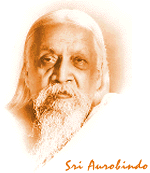Much of his time in India, however, Mikhaël Aïvanhov spent alone meditating in the tranquillity of secluded places or temples. In this way he was able to enter into communion with the invisible reality without being disturbed. The lives of the great magi are lived not to work out any karma of their own but to work for the spiritual welfare of all beings on this planet.
For those of us who are always caught up in our own personal dilemmas and hectic programs, such a state of being is difficult to imagine. We have little idea of the kind of labour done by the silent sages. We tend only to see their external actions and then form quick opinions about them. The sages of India have typically been criticized by Westerners and Indians under the influence of a Western-style education.
Their apparent inactivity and silence have been taken as a sign of indifference and perhaps even indolence, which is seen as inexcusable in view of India’s great economic plight. Such critics forget, however, that the sages have their distinct individual tasks to accomplish. Not every sage is a political activist like Mahatma Gandhi or a philosopher like Sri Aurobindo.
Some, like Ramana Maharshi, have the function of simply being present—a potent symbol of the spiritual efficacy of silence and a powerful channel for the divine Light. Not every illumined adept is destined to be a teacher. Few have the destiny of an adept who is entrusted with the lives of thousands, as was Omraam Mikhaël Aïvanhov.
Perhaps his most significant meeting was with the legendary Himalayan adept Babaji. He first met a disciple of this great master, whose name was Hanuman Baba, the priest at Babaji’s temple in Nainital. In obedience to his guru, Hanuman had taken a vow of silence for several years and so communicated with Mikhaël Aïvanhov on a slate, in English. They spent several days together, sometimes until two or three in the morning.
Subsequently, Mikhaël Aïvanhov twice met with Babaji himself, though what passed between them will never be known. He met Babaji on June 17, 1959, in the mountains of Almora.
When he returned from India in February of 1960, he was a changed man. The change was so profound that even his physiognomy was visibly different. Several students went to Orly airport to welcome him back and were shocked by his transformation. As one of his disciples described the moment, not without some pathos:
“He is here. Stupefaction! We are struck dumb, frozen in this moment of history. He is no longer the same! Even his nose is different! There was no doubt about it, he was the image of his Master, Peter Deunov. He looked like what we imagine the world’s great Initiates looked like, proving that they all had the same model. The child I held in my arms said: ‘It’s Moses.’ It was Moses.”
Mikhaël Aïvanhov returned looking like the archetypal prophet, a look-alike of his own teacher. Henceforth he was no longer Brother Mikhaël but Omraam Mikhaël Aïvanhov. Sensing more than understanding the overwhelming transformation that had occurred within him, his students acknowledged him as a master, a conductor of the numinous, who was to be approached with the greatest respect. All this time he had refused to be addressed as Master by his disciples. He had always regarded himself as their fellow disciple of his own teacher. Now everything had changed. His disciples insisted on paying him due respect, and he finally accepted being called master.
Extract from The Mystery of Light by Georg Feuerstein
Chapter2. Omraam Mikhaël Aivanhov: Visionary, Teacher and Healer




Leave A Comment